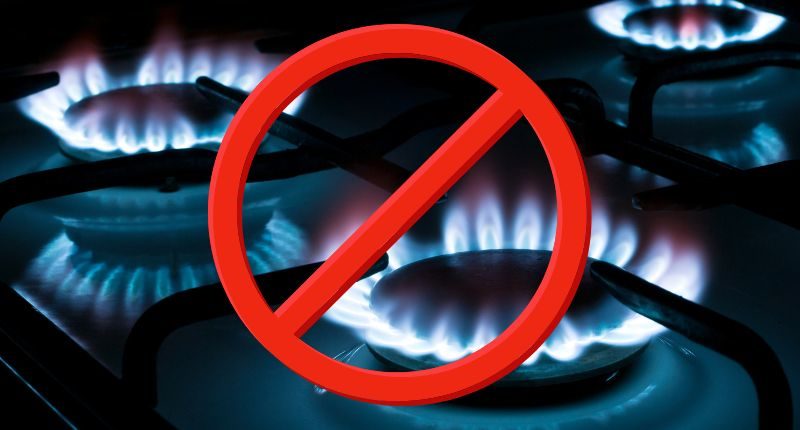
- Gas cooking a major cause of asthma, study finds
- Global push for electric kitchens goes live
- Lendlease and GPT make major commitments to the cause
“Now we’re cooking with gas!” may soon be a thing of the past, as electricity seemingly proves superior.
Not too long ago, the Property Council in Western Australia held an event discussing the road to net zero carbon, during which the Green Building Council of Australia (GBCA) said one initiative it was working on was promoting the electrification of kitchens. One anecdote sought to prove that even gas intensive methods like wok cooking could move to induction cooktops.
Launch of Global Cooksafe Coalition
Today marks the launch of the Global Cooksafe Coalition (GCC), an alliance of stakeholders from a broad gamut of industries including public health, climate, aid and development organisations, property companies, and chefs.
The GCC is also launching its new report, The Future of Cooking is Electric, with key takeaways including:
- Health and climate benefits from electrifying the kitchen,
- Providing cheaper more sustainable ways of cooking,
- Induction technology can outperform gas, and
- Can be transformative, cost-effective, and safer than gas.
Going on the electric has sparked interest in major developers and REITs, who are committing to the high voltage cause. Lendlease and GPT Group have both committed to ending gas in kitchens of new developments in OECD countries by 2030 and all-electric retrofits of existing properties by 2040.

“As recognised leaders in sustainability, GPT is committed to being a positive contributor to the environment while improving our resilience to environmental changes,” said GPT’s Head of Sustainability and Energy, Steve Ford.
“Our actions to reduce energy consumption and emissions in our portfolio are driven by GPT’s Energy Master Plan and commitment to operate a carbon neutral portfolio of assets within our ownership control by 2024. The electrification of kitchens in our assets reduces the use of fossil fuels by our tenants, and subsequently their customers, which plays a role in bringing us all closer to a 100 per cent renewable energy future.”
“In line with our target to reach absolute zero carbon by 2040, electrification across our global investments, development and construction operations is essential,” said Lendlease Global Head of Sustainability, Cate Harris.
“While the transition to electric cooking powered by renewables will take time, it’s already underway at our new commercial development Victoria Cross Tower in Sydney and we’re looking forward to working alongside our Coalition partners to drive and accelerate industry change.”
The electric cooking coalition is supported by some of the world’s most recognised names in cooking and haute cuisine, from Neil Perry, to Gordon Ramsay’s Development Chef Rob Roy Cameron, trailblazing induction chef William Gleave from Bright Restaurant in London, Chat Thai’s Palisa Anderson and James Edward Henry of Le Doyenné in France.
“Electric is definitely the future of cooking in the home and in commercial kitchens. It’s just cleaner, it’s more efficient and it’s definitely more beneficial for the environment. Everything tends to be neater and cleaner without gas,” said Australian chef, restaurateur, author and television presenter, Neil Perry.
“Food tastes better in a restaurant because we control the heat very precisely. Good induction means you can replicate this in the home kitchen and get very high heat, very low heat and excellent control. For example, most home gas stoves don’t get hot enough to cook a stir fry, and good induction is a step up,” said Palisa Anderson, Chat Thai/Boon Luck Farm.
“Electricity access has expanded rapidly over the last five years in many emerging markets, yet electricity is still rarely used for cooking. Electricity has the power to transform safe cooking for communities in low- to middle-income countries where 3.2 million people per year are dying from illnesses related to indoor air pollution from cooking with solid fuels and kerosene,” said Nyamolo Abagi, Senior Manager at CLASP East Africa.
Electric kitchens make for healthier homes
Research shared in the International Journal of Epidemiology* found that children in homes with gas stoves had a 42% higher risk of having asthma, and a 24% higher chance of being diagnosed with asthma at some point in life.
It is estimated that some 12% of childhood asthma in Australia is caused by cooking with gas**.
Various other more recent studies*** also found that gas stoves leak methane and other air pollutants even when they are not being used and that unburned gas has the potential to cause some cancers.
“Parents would be shocked to learn that a child living with gas cooking in the home faces a comparable risk of asthma to a child living with household cigarette smoke. In fact, cooking with gas is estimated to be responsible for up to 12 per cent of the childhood asthma burden in Australia,” said Dr Kate Charlesworth, public health physician and Climate Councillor.
“Gas – just like coal – is a fossil fuel that’s driving the climate crisis. It has no place in our homes. We need to be doing everything possible to improve health outcomes for our children, and that means getting gas out of our homes as well as out of our energy mix to protect future generations from worsening climate impacts.”
~~
* Journal: Meta-analysis of the effects of indoor nitrogen dioxide and gas cooking on asthma and wheeze in children. Published 20 August 2013, Volume 42, Issue 6, December 2013.
** Damp housing, gas stoves, and the burden of childhood asthma in Australia. Medical Journal of Australia 2018; 208 (7): 299-302.
*** Standford scientists find the climate and health impacts of natural gas stoves are greater than previously thought. January 27 2022, Rob Jordan.
*** Composition, Emissions, and Air Quality Impacts of Hazardous Air Pollutants in Unburned Natural Gas from Residential Stoves in California. Environmental Science & Technology 2022 56 (22).







